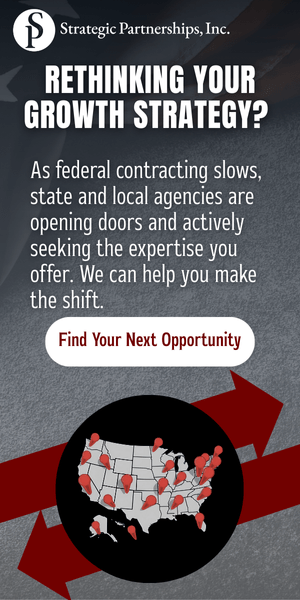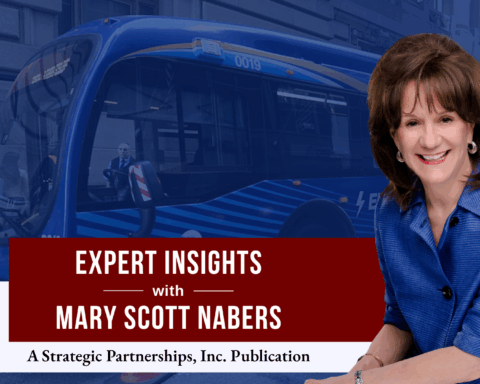A federal program that allocates funding for initiatives that ‘connect communities’ is responsible for hundreds of new projects in America. Because of its unique success, the program is also credited as the impetus for hundreds of similar projects that now receive funding from other sources.
The U.S. Department of Transportation oversees the Reconnecting Communities Program (RCP) and supports projects that remove or mitigate barriers to community connectivity. Benefits that result include better mobility, economic stimulus, equity and citizen benefits. The projects that receive funding are designed to deliver transformative solutions that knit communities back together. This can include enhanced public transportation, pedestrian walkways, overpasses, complete street conversions, linear trails, community gathering spaces and even highway deck plazas with retail and other amenities constructed on top of freeways.
Last year, RCP funding totaled $195 million; this year, in 2023, the program awarded $198 million to support 45 projects. By 2026, the program is projected to award $1 billion for projects that connect communities.
The Michigan Department of Transportation will rehabilitate the Victoria Park Plaza, a bridge and plaza structure extending over Interstate 696, for $43.4 million. Project planners have secured $21.7 million from the RCP program to support the effort. The design phase is currently underway, and construction is slated for early 2025. The plaza that has existed for many years over the highway is in poor condition and will be obsolete by 2025. Safety improvements and maintenance are required to prevent water leakage and significant icicle formation in cold weather. The plan will also include constructing amenities to increase public accessibility. Improved walking and biking spaces will increase commercial and cultural activity for local businesses, schools, places of worship and community centers. When this part of the interstate was constructed, it divided the city’s Orthodox Jewish community into two separate neighborhoods. This project will open access over the freeway to restore community ties between the two areas.
City officials in Greensboro, N.C., will construct a community facility to connect a divided community by delivering an improved and expanded public amenity. The project currently carries a cost projection of $73 million, but planners say that estimate is likely too low. The funding was made available from an approved Greensboro bond election, and construction solicitations are planned for December 2024. A current community facility, built in 1965, offers few amenities to people living outside the Windsor community. The objective is to deliver a new and enhanced public place that provides easy access for all citizens. The project will combine two existing buildings: the Windsor Recreation Center and the Chavis Public Library to form the Windsor Chavis Nocho Park Community Complex. It will include a swimming pool, indoor track field, basketball courts, library services, biodome and aquatic rehabilitation facility. Other project components will include adding public parking spaces, replacing existing bathrooms and constructing an amphitheater and a multipurpose field.
In Oklahoma City, the MAPS (Metropolitan Area Projects) program will partner with the city’s metro service agency, EMBARK, to construct two bus lines to expand the city’s bus rapid transit (BRT) system. The project is currently being designed and carries a cost estimate of $61 million. The objective is to improve access and service to underserved areas of the community, and work will focusd on the city’s northeast and south corridors. These two areas lack adequate public transportation options, hindering economic stimulus and community equity. The new and improved transportation infrastructure will strengthen previously weakened community ties. The project will include amenities like new benches near transit stops, bike racks, ticket kiosks, real-time arrival displays, pylon signs and wayfinding infrastructure.
The city of Jackson will rebuild a roadway for $27.5 million after receiving $20 million from the Rebuilding America’s Infrastructure with Sustainability and Equity (RAISE) grant program. The funding will allow the city to reconstruct 1.5 miles of Medgar Evers Boulevard, which is prone to flooding and needs roadway repair. The project will provide a renewed street with four lanes, raised landscaped medians, enhanced lighting, and new sidewalks. The stormwater drainage system will also be improved to solve a longstanding flooding issue. New signage will direct citizens and visitors to local landmarks and other amenities, attracting more tourists. Construction is planned for September 2024.
The city of Toledo received a $20 million grant from the U.S. Department of Transportation. It will use the funding to modernize roads and utility projects in the Junction and Uptown neighborhoods. The funding will help support the overall cost of the $53 million Connecting Toledo Neighborhoods to Opportunity project. The effort will include repairs to community infrastructure to improve roadway safety and mobility. It will also overhaul and provide new water, sanitary utilities, sidewalks and streetscapes for 38 city blocks. Other project components will include new bicycle infrastructure, a multi-use path separated by physical barriers from the roadway and a new transit hub offering seating, free Wi-Fi and bike shelters.
The city of Northampton, Mass., has announced plans to redesign its downtown area. The revitalization project will include expanded walking areas, bicycle lanes, angled parking, newly planted trees and reduced driving lanes. The project carries a projected cost of $21 million, and funding will come from a federal grant, which will be consolidated with state funding. City officials say the project will promote community connections, boost economic vitality, promote greater safety and provide improved access for disabled commuters and families with strollers. The objective is to enhance the downtown area and make it more attractive to citizens and visitors.
Currently, there are numerous projects in the ‘connecting communities’ category currently in the design phase. These types of initiatives will become even more frequent by 2024.












